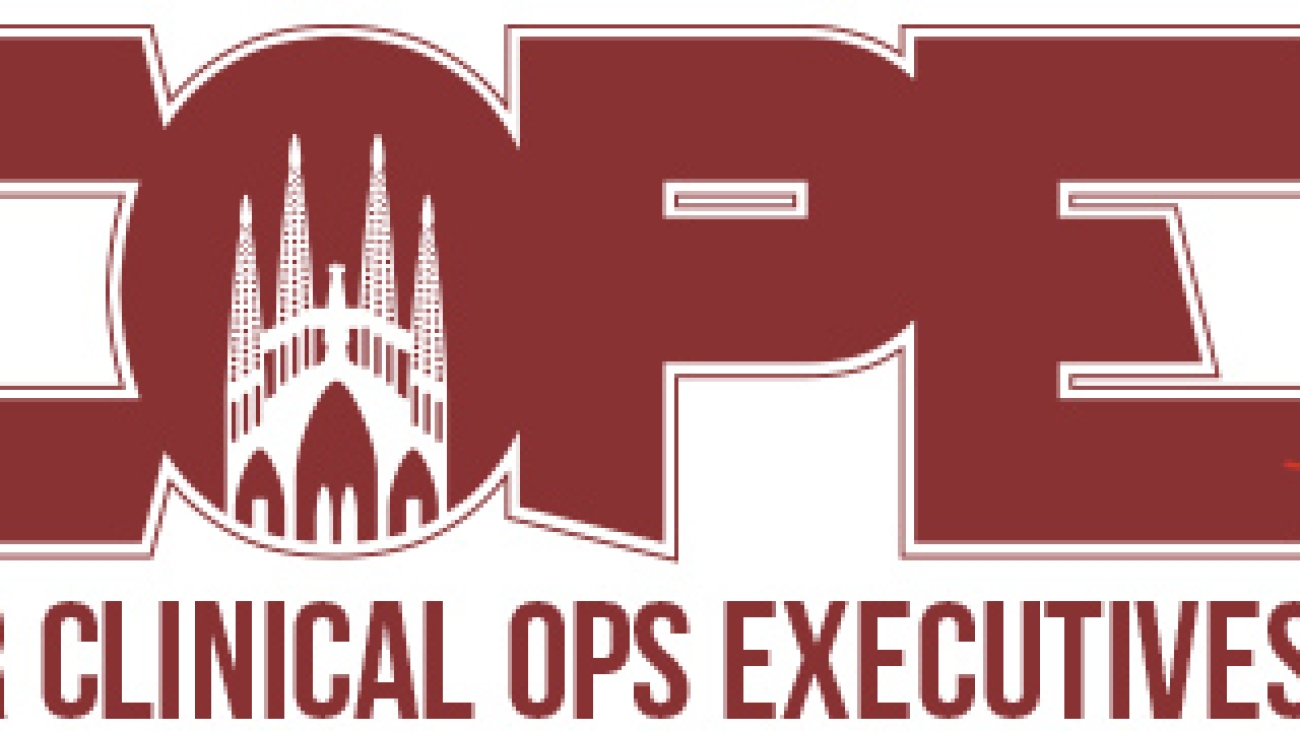Following on from my recent article about effective strategies that can be used this year (2022), I’ve peered into my crystal ball to see what the landscape might look like for patient recruitment and retention ten years from now – based on the same categories identified in that original article and written as though we were already in the year 2032.
For many of these options to be available there would obviously need to be significant developments over that time, particularly in such areas as data sharing and regulatory approvals, compared to where we are now. But we certainly seem to be heading towards a situation where each of these approaches is possible:
HCP Outreach
Offering a clinical trial to patients has become standard practice for HCPs over the last few years, but they still need to be made aware of the trial and how it relates to their patients. Universal sharing of medical records has made it easier to identify patients who are likely to fit the inclusion/exclusion criteria, so you should be utilising this capability to present your trial to a doctor when they are researching suitable treatments during a patient meeting.
All the major HCP admin systems now allow for this kind of identification and associated messaging, so you should ensure you provide all the relevant details in a digestible, bitesize format for the doctor to present to their patient – bearing in mind they will only have limited time to do this. One of the best options here is to have the doctor present the patient with a scannable code that allows the patient to access all the relevant information on their smart device.
This provides the capability for the patient to apply for the trial there and then if they have time –through spending a few minutes in the waiting area post-appointment – or to set a reminder to popup on their smart device at a more convenient time. Ensuring there is engaging and informative content available in the trial apps that the patients access will help aid the recruitment process.
There are also many HCP surgeries that have dedicated clinical trials sign up systems in an area set aside for this purpose. Allowing patients to access all the relevant information they need, as well as choose from a range of available trials they can apply for, with a clinical trials specialist nurse on hand to assist if they want help from a real live person.
Pharmacies, too, can play a role here. Both through having general messaging on display about specific trials, and through having a trigger message attached to the provision of specific treatments that are likely to indicate a patient living with a relevant condition. (Adhering to all the privacy regulations, of course, such that only the intended recipient is made aware of the trial).
Digital Outreach – Direct to Patients
Plenty of opportunities here to reach patients ‘where they are’. Streaming TV provides a great platform for highly focused targeting of people who match the demographic profile for your trial’s inclusion/exclusion criteria. The ability to input a list of contacts who have opted-in to receiving communications about relevant trials based on their health records – and also build a ‘Lookalike audience’ based on these people – helps to further narrow the advertising capabilities to target the people most likely to act on your messaging.
But make sure you check the option to ‘only show ads to specific people, not when others are watching alongside’ – as identified by people’s home smart sensors – to avoid any possible privacy issues from showing ads based on personal health information to people other than the relevant person. (And obviously many people watch streaming TV on their own devices anyway, rather than the main family TV).
The existence of digital ‘trial marketplaces’ has helped to both raise awareness of the existence of trials, and to ensure that trials are developed in a more patient-friendly fashion. Being able to pick and choose from a range of trials based on a patient’s own criteria for what they’ll be prepared to go along with, has somewhat shifted the balance of power in favour of the patient/consumer and away from the sponsor being able to dictate the terms of engagement. Making your offer look more appealing to potential trial participants is a key factor in attracting applications through these trial marketplaces – much of which will be based on making the trial as easy to participate in as possible, plus answering the patient’s main question of ‘what’s in it for me?’.
You may also be successful in setting up your own Virtual Reality trial outlet in the multiple versions of the metaverse and virtual social media platforms that people are known to participate in. The settings for these platforms allow for your outlet to appear only to your relevant target audience, and only when they are likely to be amenable to receiving your message – whether passed on via a ‘real person’ avatar or simply in the form of some kind of advert or poster in the location they are visiting. Analysing the data ongoing for which options work best here will help refine the recruitment process, so you can attract a large number of suitable applicants.
Of course, it’s not all about digital when it comes to patient outreach. While people are certainly more comfortable nowadays attending such things as concerts and townhall-style meetings in a virtual manner, there are still plenty of opportunities for getting out to meet people at a grassroots level. Analysing any available data on the demographics and behaviours of the people you are likely to meet beforehand is a great way to ensure you maximize your opportunities during outreach meetings in real life.
Relationships with Patients and Key Opinion Leaders
The closer integration of patients with pharma is continuing, such that we are truly nearing the point where the industry can claim to be fully patient-centric – certainly when compared to how it used to be. The accessibility of health records has enabled every patient to be a kind of Key Opinion Leader – in that the way they behave and interact with health-related information can now be monitored and tracked, such that decisions are made based on a large amount of relevant patient data, rather than simply being based on a few people’s opinions.
This allows you to identify and reach out to pretty much anyone who may be in the target audience for your trial – at least, anyone who has opted-in to receive such messaging. Encouraging the non-KOLs to share their thoughts is also now easier than ever, as per the levels of accessibility outlined above – so you should also be looking to reach out to those patients who maybe don’t put their views online in the way the KOLs do.
The Key Opinion Leaders still have relevant followings of people, of course, such that you should be developing ongoing relationships with them as early as possible in the trial development process, in order that they might share the details of your trial with their followers as a trusted advisor.
Traditional Media and Podcast Awareness Campaigns
The death of traditional media has been discussed many times over the years – and yet it remains a factor in daily life, with broadcast and print media still retaining a large hold on people’s attention. The adoption of Virtual Reality by the main broadcasters and podcast platforms has enabled people to feel like they are participating in the debate along with the broadcasters – allowing for very specific targeting of people during particular programs, with individualized messaging able to be aimed at people who fit specific profiles.
Wide broadcast adverts of the type that used to be commonplace during traditional TV broadcasts can also still be effective. For these you should use the sophisticated audience-tracking data that is available from all the main platforms to identify suitable programs that are likely to attract a large number of your potential participants.
For more focused ads, you should target relevant individuals with personalized messaging – as per the Streaming TV suggestion above – either on one of their smart devices or direct to their Virtual Reality (VR) device. When utilising VR advertising, of course, it’s been shown that some people prefer a ‘real person’ avatar to hover into view to pass on the message, while others prefer a simple ‘flat image’ that they can then read through and act on if they wish. Data regarding each person’s preference should be available from the platform so you can target people using their preferred method as appropriate.
Patient Application Platform
The much-needed introduction of standardized clinical trial systems architecture that has taken place over the last few years has enabled the development of multiple highly effective and functional patient application platforms.
These platforms help facilitate an end-to-end process through which patients can find out what they need to know about trials using whichever method they prefer – such as reading, watching videos, or interacting with Artificial Intelligence avatars or a real person. Patients can then apply for the trial and be tracked through the process from start to completion. The data that is gathered through these platforms should be utilized for improving current recruitment and retention results, as well as informing the processes adopted for future trials.
Privacy and data protection issues have become ever more patient-led over the last ten years, while at the same time the sensible approach of allowing people to share their health records information with relevant parties has seen an enormous growth in the availability of data that can be used for recruitment and retention. Building on the original laws such as GDPR and HIPAA, the current regulations are simultaneously strict enough to protect a person’s privacy, while progressive enough to allow for what might be deemed ‘common sense’ sharing of data between applications.
The platform you use, of course, is not as important as what you do with it, so you should always ensure the outcomes you’re looking for are setup correctly within the system. Thus enabling you to make the most use of the technology and the huge amount of data on offer in order to engage with people who have an active interest in participating in your trial.
Swift Follow-Up for Patient Applications
Amazingly, it’s not so long ago that patients would apply to participate in a trial, then be kept waiting for days and sometimes weeks before being contacted to take their application further – with many never actually being contacted at all. Fortunately, that’s now a thing of the past, with all the patient application platforms now providing the functionality for a swift follow-up – either from a very sophisticated Artificial Intelligence avatar (of the type that has passed the ‘Turing Test’), or from a real person with medical training. For maximum effectiveness, you should ensure your follow-up operators learn from any feedback they receive, and continually update the best practice methodology for everyone involved.
Of course, some trial applicants may opt to receive their follow-up by message on one of their smart devices, or via a Virtual Reality interaction, or to pursue things at a time of their choosing – so it’s important to provide these options during the application process, in order that you don’t put the person off their intention to participate.
Diversity Equity and Inclusion
With widespread data sharing of health records throughout the US and EU, there have been significant improvements in increasing trial participation from underrepresented populations in these regions over the last few years. The pace of adoption of suitable technologies outside the US and EU has also helped build a potential patient population that covers a truly diverse range of people, such that the treatments being developed can be proven to work for everyone, not just a narrow range of people from one type of background.
Additionally, the legal requirements that are now in place to ensure your trial population reasonably reflects the make-up of the population at large are more easily able to be complied with, as you can identify and monitor who is applying for your trial in real time, then shift your attentions to underrepresented populations accordingly. This is still relatively tricky, of course, as privacy issues mean you’re unable to target people from specific backgrounds. However, through analysing the demographic profiles of various target populations – based on geography, interests, behaviours – you can revise your targeting on an ongoing basis to encourage widespread diversity and inclusion among your participants.
Best Practice Education
It’s now easier than ever to identify the research sites, locations, and activities that are performing best for recruitment and retention. With so much data available on such things as ‘time to first patient’ and average ‘loss to follow-up’ rates per area, you should be continually monitoring and analysing this information in order to identify what’s working best so you can replicate these actions in other parts of your recruitment and retention program that are not performing so well.
Simply having the data available is only the start, of course, as you’ll need to have the relevant knowledge and understanding to be able to interpret the data and turn it into actionable recommendations. There are several solutions that will help in this process – many of which will provide recommendations and suggestions based on data about successful activities from previous trials, and will deliver a continuous feedback loop as new data becomes available.
Research Site Assistance and Liaison
With trial protocols continuing to become more complex and specific, along with the requirements for ever more data to be recorded and interpreted, it might seem that sites are facing an ever-increasing burden of administration. However, the recent trend towards including sites (as well as patients) in the trial and protocol design stages of clinical trial development, plus the existence of system-agnostic user-friendly patient management platforms that integrate seamlessly with Clinical Trial Management Systems and other site-specific systems, has provided sites with the opportunity to recruit and retain patients without an increase in administrative burden.
Having dedicated site support teams and being able, in many cases, to provide an on-site recruitment and retention specialist (due to the overall cost savings for trials that have occurred as a result of the sensible use of new technologies since the ‘out of control’ years of spiralling costs from ten years ago) has further enhanced the sites’ capabilities for recruitment and retention.
Wherever possible, you should ensure you are providing as much in the way of support as you can, plus are liaising with the sites on a regular basis to gather feedback for ongoing improvements and ensuring your trial stays ‘front of mind’ and that no patient ‘slips through the net’.
Patient Data and Patient Registries for Region, Site, and Patient Identification
The universal sharing of health data has enabled the building of multiple databases that allow you to filter for likely patient populations in different areas. With a traditional site-based trial this is ideal for identifying the best sites to be using, and is also extremely valuable for choosing a range of areas for operating your DCT trials.
The skill here is in setting the identification criteria such that it provides you with sufficient potential trial participants in areas where you know you will be able to administer and operate the trial in a timely and cost-effective manner.
It’s also worthwhile looking to make use of the large databases of patient records that have been built-up by various patient groups, as they already have a relationship with the potential participants, so a message that comes from the patient group as a trusted advisor may help encourage people to find out more.
Patient-Friendly Trial Design
With an ever-increasing set of inclusion/exclusion criteria, there came a point several years ago where it became extremely difficult to recruit patients for certain types of trial. Fortunately, that situation has improved due to the adoption of multiple technologies – including the use of Virtual Twins for utilizing Artificial Intelligence to help identify patient populations.
The enormous amount of data available from people’s continuously-updated health records (updated ongoing through their smart devices and smart sensors) means that patients are having more of an input than ever previously into trial and protocol design – whether they are aware of it or not.
Thankfully for retention purposes, it is now possible to provide adequate remuneration for patients who participate in trials, with the regulatory caps on compensation amounts helping to ensure you can’t ‘bribe’ a patient to participate in your trial over those of your competitors. And it isn’t always about a simple financial transaction, of course – whether paid in cash, credit, gift card, blockchain or whatever. You should be analysing the data ongoing for what works best when it comes to keeping patients interested in trials, and making sure you offer patients a suitable recompense for the input they are having towards the development of your treatment.
As mentioned above, it is also very valuable for both recruitment and retention purposes to be including the sites in your trial design, as they have a vast amount of experience with operating trials and should have a good understanding of what patients are likely to be comfortable doing.
Decentralization
Back in the earliest days of the worldwide Covid pandemic (early 2020), there was a rush towards initiating decentralized trials – primarily based on the possibility of using new technology to bypass the traditional model of having patients attend sites, and allowing people to participate in trials from their own homes. (Despite, of course, this technology mostly having been available, though not utilized, for much of the previous decade).
What became clear after a while was that leaving sites out of the equation was actually not such a good idea – given their levels of experience ‘on the ground’ and their understanding of how to run trials successfully. Which resulted in the current situation – where the majority of trials are conducted in what we originally called the ‘hybrid’ model, with sites and Principal Investigators acting as the main operators of the trial, and suitable technology being used to facilitate the necessary gathering of data.
What this means in practice is that there is now no real barrier for trial participation based on simple geography alone – where previously a patient would either have to live within around 50 miles of a research site, or have their travel and accommodation taken care of in order to attend site visits.
To fully take advantage of this decentralized approach, you should incorporate the full range of options in your strategy. These include Mobile Trial solutions where a trial-equipped vehicle visits people in their own location, Retail Trial solutions where patients can call into their local pharmacy, and HCP Surgery visits where the trial is conducted at the patient’s own local doctor’s office.
Added to this, there is obviously a large amount of in-home technology – such as smart sensors and wearable devices – to enable suitable patients to record the essential information for themselves. This is an approach that is commonly used for Real World Evidence data gathering – which has become much more a part of the clinical trials landscape over the last ten years.
Virtual Reality systems have been shown to help aid both recruitment and retention – through being able to communicate directly with people while they are exploring their preferred metaverse, and thus being able to inform them of a suitable trial and keep them updated with the latest information, as well as assisting them with the ongoing gathering of endpoint reporting where it is appropriate to do so. (e.g. through appearing to be ‘in the room’ with the patient while they take certain treatments or record certain data).
For certain types of trial, the use of Virtual Reality can lead to a fully decentralized approach that spans several continents while still being managed and operated within the same timescale and overall framework.
To really take advantage of these opportunities, you should ensure that your trial can be operated and administered using as many of these means as possible – engaging one or more of the various solutions providers who can assist with delivery of these outcomes – thus opening up your potential audience of trial participants far beyond what it would have previously consisted of.
Travel and Expenses
The widespread adoption of Decentralized options (as above) has decreased the requirement to provide travel and expenses options. Though there are still many occasions, of course, where a visit to a specific research centre is required. With patients having much more of an option to ‘vote with their feet’, it clearly makes sense for recruitment and retention purposes to provide a full concierge-style service that handles all the travel and accommodation details on a patient’s behalf.
On top of this, having their expenses paid in a timely fashion of their choosing will help to convince participants that your trial truly is patient-centric and worth taking part in.
Retention Through Communication
Thankfully, the massive drop-out rates of previous years are becoming a thing of the past. In fact, one of the issues facing trial sponsors now may not be the fact that patients drop out of a trial because they don’t want to continue with it, but that they may wish to switch to another trial that they feel is being operated under more favourable conditions.
The main thing you can do in that case, of course, is to ensure your trial is as patient friendly as possible. Also, as was the case before, a key issue here is ongoing communication. Patients want to feel that they are fully involved in the process and are not simply a ‘subject’ to be experimented on. (Another thing we can be thankful for is the now universal casting-off of the word ‘subject’ in favour of the more friendly ‘patient’, ‘participant’, ‘volunteer’, or even ‘person’).
Clear and easy to understand communications are now far more common than previously, but it’s still a good idea to check everything you are sharing with patients to gain the perspective of interested parties from a non-medical background. There are plenty of good medical communications organisations around who can help with this – or, indeed, you can simply request that a non-medical person you know takes a look over the messaging for ease of understanding.
Another factor that helps retain patients on placebo-based trials is if they are made aware that, if possible, they will be able to receive any successfully proven treatment in the future, if they have been in the randomized placebo group.
Keeping patients informed as to the results of the trial – including which group they were in and the options for the future – is another factor that helps give patients a sense of connectedness to a trial, especially if they are aware from the outset that they will be getting this information.
Back to the Present – 2032 Predictions Concluding Thoughts
The inevitable increase in the use of data and digital solutions in clinical trials and recruitment and retention activities is well underway in 2022 – having also certainly been accelerated by the pandemic. What we need to remember, though, is that no amount of technology can replace the need for human involvement at every stage of the process. Whether that’s including patients and people from sites in trial and protocol design, or engaging in ongoing communications with trial participants (and not just through using Artificial Intelligence avatars!)
And when it comes to successful patient recruitment and retention strategies, there is no benefit to having an enormous amount of data if you don’t have the knowledge and understanding to be able to interpret it and act on it for better outcomes – which is something that only humans will be able to do, even in 2032.
Let me know in the Comments if you think the predictions I make here are in line with what you foresee. Or get in touch to discuss how I can help recruit and retain patients for your trials.










